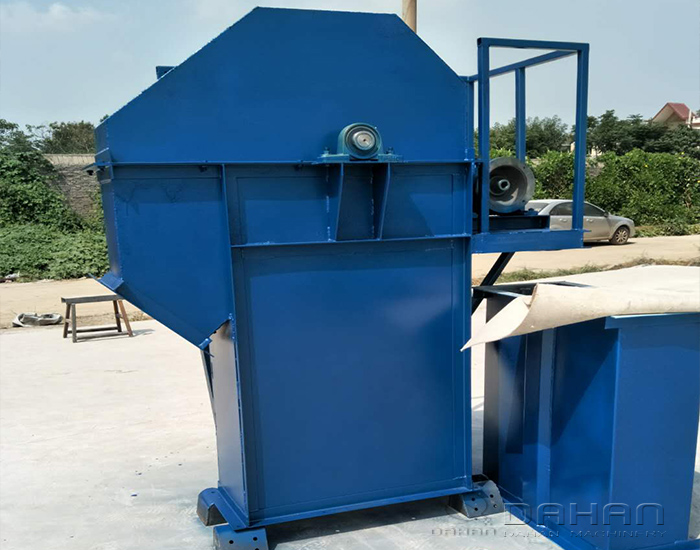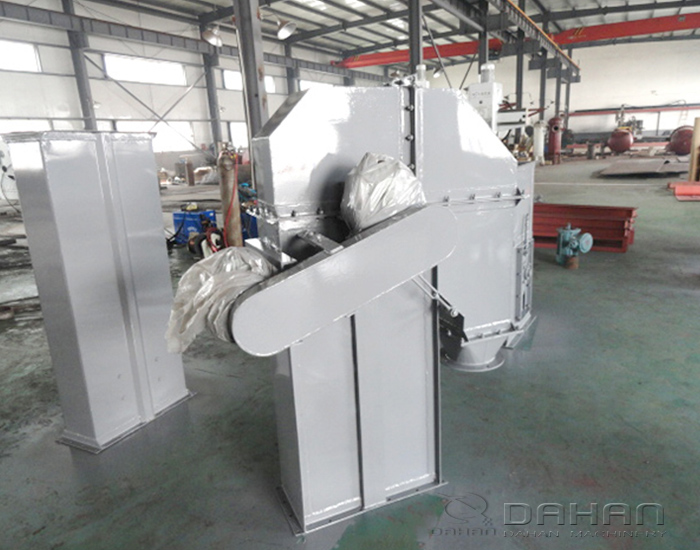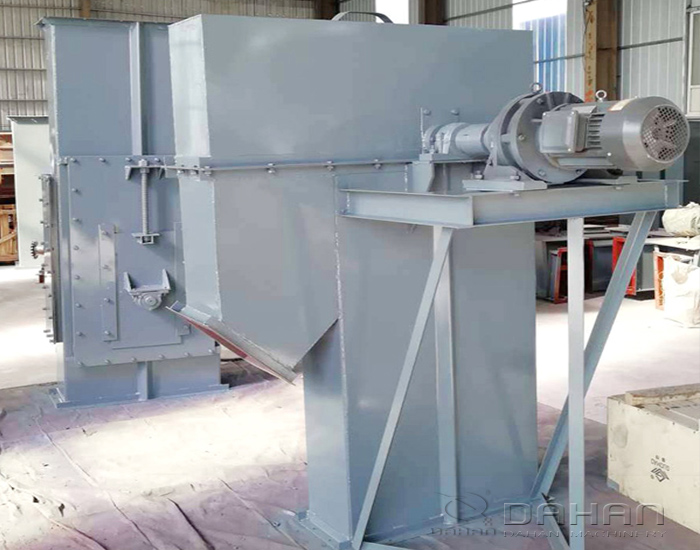Users will find that the transmission mode of bucket elevator is different when they buy bucket elevator, but they don't know the difference without knowing about these transmission modes. So today, i will tell you about several transmission modes and their differences.
Generally speaking, there are five transmission modes of bucket elevator, each of which has the following characteristics:
In this way, the old parallel gear reducer is adopted, and chain drive is adopted between the drive motor and the input shaft of the reducer, and between the output shaft of the reducer and the drive shaft of the head of the hoist. The advantages are low cost, but the disadvantages are that there are many transmission links, complex structure, low efficiency, large maintenance workload and high operation cost.

The transmission modes of deceleration motor and chain drive are generally used for low-speed hoist with small lifting capacity and height. Because of the small driving power, deceleration gear motor and first-order chain drive are adopted. There are also direct connection modes without chain drive. The structure is compact and the cost is low, but the slow drive device can not be accelerated, and the backstop can only be added to the head drive shaft.

The transmission mode adopts standard straight axle gear reducer, the output axle of reducer adopts hollow axle and the driving axle of hoist head is connected by locking disc, and the hydraulic coupling is used between the driving motor and the input axle of reducer. The structure is compact, the starting is stable, and the hydraulic couple slips when overload occurs, which plays a protective role. Because of the standard reducer, it is relatively economical, but it needs to be equipped with a diffuse drive device and a backstop.

There are three main types of coupling used in this transmission mode, among which the elastic pin coupling has poor compensation ability for axial deviation and requires high installation accuracy, but the pin has low cost, is easy to process and replace, and is widely used; the elastic pin coupling has better compensation ability for axial deviation, small size, light weight, low inertia and high reliability, because of the use of synthetic elastic buffer block, it can be used. Absorbing part of vibration energy is helpful to improve the vibration of the whole machine, but the cost is high. The snake spring coupling is simple in structure, convenient in disassembly and assembly, and has better compensation ability for axial deviation. The disadvantage of the transmission mode is that it occupies more axial space and requires high installation accuracy. In addition, the coupling used for the output shaft of the reducer has lower speed and larger specifications, and the corresponding cost increases.

For super-high and super-large hoist, when the power of driving motor exceeds 200 kw, the corresponding reducer specifications and the weight of the whole transmission device are larger. Generally, symmetrical double-drive mode is adopted. Hydraulic coupler is used between the driving motor and the reducer to automatically adjust the synchronous transmission power of the two driving motors. After testing the actual operation of the hoist, the current difference between the two driving motors is generally 10% left. Right, it is suggested that the non-uniformity coefficient of the two drives should be k=1.5-1.2.
If you have any other questions and better ways.Contact us!
Address:China,Yanjin county forest park gate to the west 1000 meters north road.